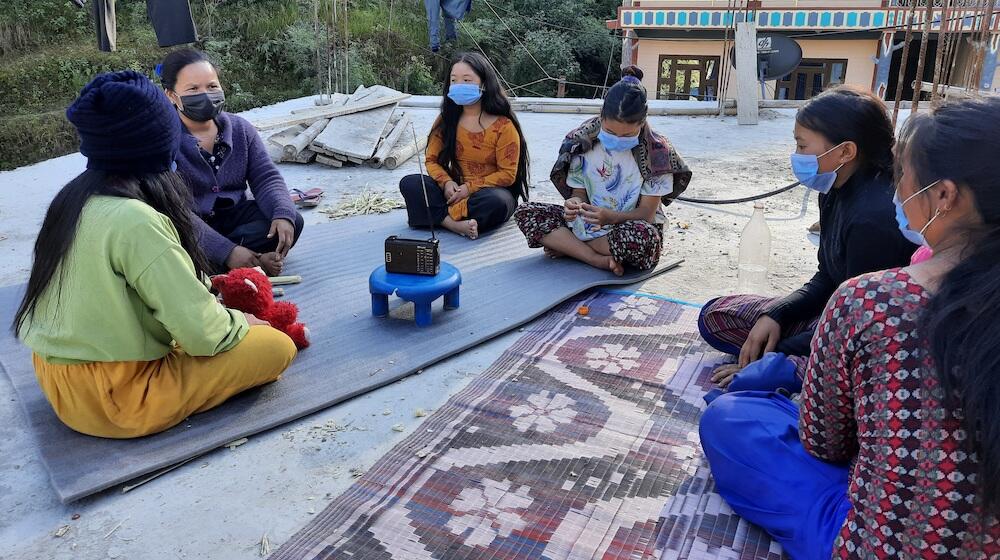Distraught, Bidhya Sahani had to leave school after the seventh grade in southern Nepal’s Kapilvastu district along the border of India. Her family was struggling financially and needed more help with household chores. They also had plans to marry her off.
Exposed to poverty, limited opportunities and the notions that girls are less valuable than boys, Bidhya was just one of the many girls in rural Nepal at risk of child marriage and other harms.
Now, in the midst of the COVID-19 pandemic, forcing already impoverished people into dire situations, adolescents - especially girls - are at higher risk, crushing aspirations they had long held for their futures despite their challenges.
An additional 13 million child marriages are estimated to occur worldwide over the next decade - fallout from the COVID-19 pandemic’s impact on the socio-economic conditions and the disruptions to programmes and services that aim to counter child marriage. This comes as no surprise - humanitarian crises are known to drive child marriage, including in Nepal.
To respond to the escalating crisis, and to safeguard progress made in recent years, child marriage prevention programmes have rapidly adapted their delivery models to continue reaching vulnerable adolescents. Many leveraged digital technology using SMS, mobile apps and social media, for example, to stay connected.
In Nepal, radio enabled continuity of the popular social and financial skills programme preventing child marriage, known as Rupantaran (meaning ‘transformation’).
Rupantaran sessions taught Bidhya about human rights violations adolescent girls face like child marriage, gender-based violence and caste-based discrimination and enhanced the agency of girls. She learned how to protect her own rights and develop support networks to prevent and handle these issues.
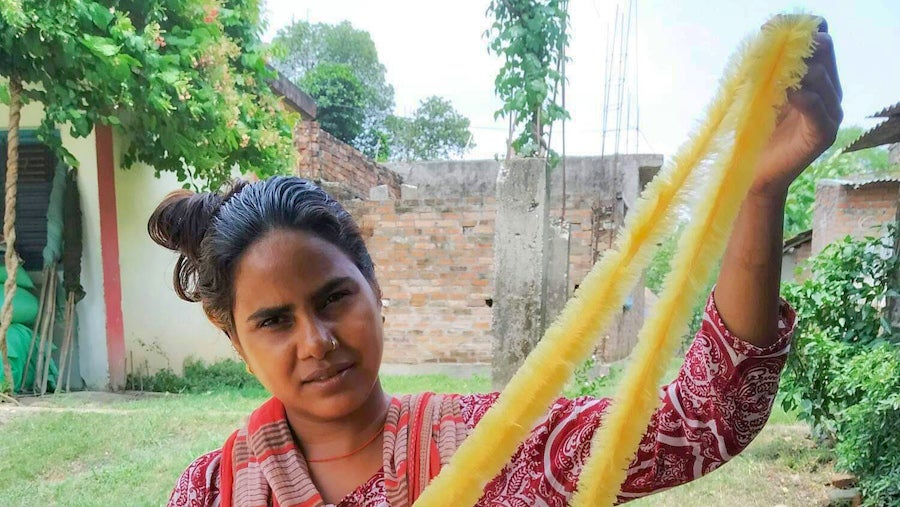
Rupantaran engages adolescent girls across Nepal who are at high risk of early and forced marriage and other obstacles that undermine their ability to reach their full potential. Girls who are out-of-school and those living in disadvantaged districts are especially at risk.
“Rupantaran was a turning point in my life,” Bidhya shares. “I was determined to continue school.”
At her insistence, Bidhya’s parents finally allowed her to rejoin eighth grade. She also developed the confidence to say no to child marriage. “When I discovered my parents’ plan to marry me off, I protested and was able to stop it.”
Radio bridges the digital divide
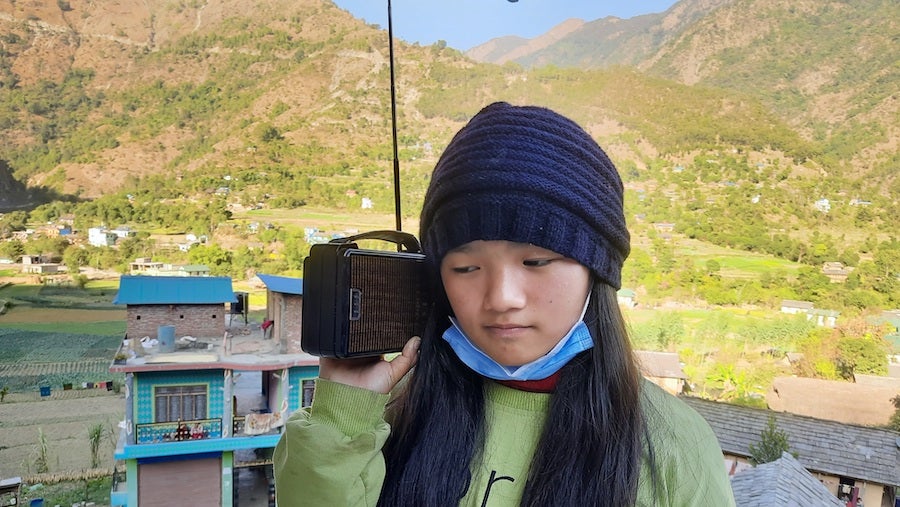
With inputs from over 3,000 surveyed adolescent girls, Rupantaran adapted to continue reaching participants during COVID-19 pandemic lockdowns to meet their evolving needs.
While mobile phones and other Internet-enabled devices are increasingly in the hands of adolescents, particularly in urban areas, radio prevails throughout most of Nepal. Disparities in access to digital technology - especially in remote places - means this traditional medium is far more effective in reaching remote communities.
For this reason, Rupantaran sessions were delivered via local radio broadcasts in combination with personal follow-up from peer leaders, either by phone or home visit.
Wearing masks, neighbourhood girls often gathered for Rupantaran broadcasts, which prompted discussion and peer support, and reinforced learnings.
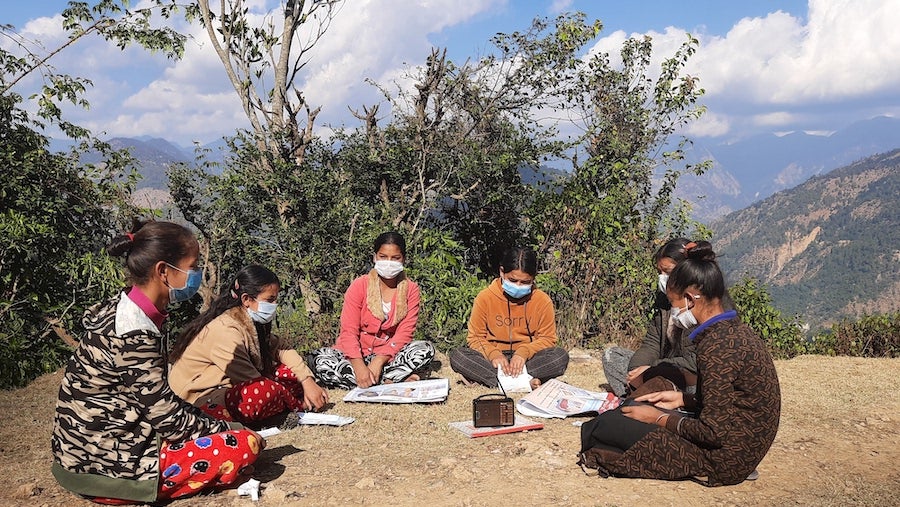
Like in Bidhya’s case, the Rupantaran programme greatly benefitted 19-year-old Priyanka Chaudhary who lives in the same rural district of Kapilvastu. “As we were unable to attend Rupantaran classes in person, the radio programme has been a great source of information and learning for us. And it was nice to have this opportunity during a tough time.”
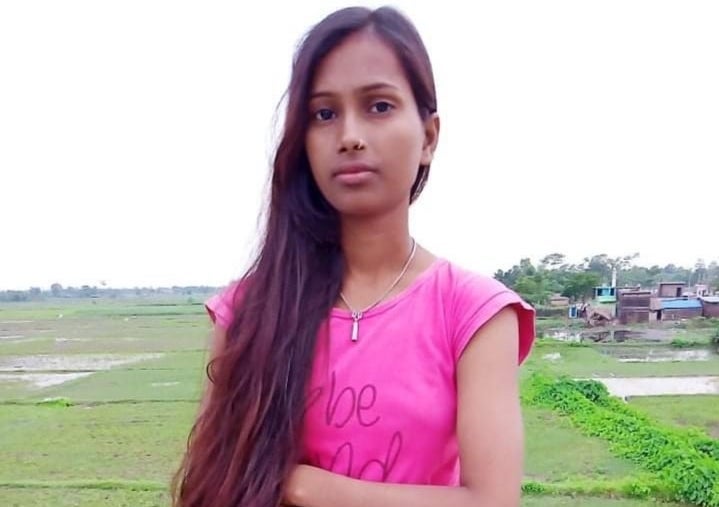
The programme’s content expanded amid the pandemic to address emerging concerns expressed by adolescent girls, including their mental health and online safety.
Sessions placed a stronger emphasis on gender equality, encouraging critical thinking and debate on gender roles, power dynamics and other harmful social norms prevalent in Nepal.
Some sessions also targeted parents and caregivers to encourage their support of girls exercising voice, choice and agency. Since radios tend to be placed on verandahs and other common areas within earshot of the home, Rupantaran’s teachings reached other family members as well.
The Rupantaran programme illustrates how radio can bridge gender and socio-economic digital divides while preventing child marriage and other harms. Most households own a radio, and girls and boys tend to have more equal access to them compared to mobile phones and computers.
In fact, because of radio broadcasts, Rupantaran was able to maintain contact with all girls enrolled in the programme – and the majority were able to push back on child marriage.
Rupantaran is an initiative under the UNFPA-UNICEF Global Programme to End Child Marriage. Ending gender-based violence and harmful practices, including child marriage, is one of UNFPA’s three transformative results for 2030.
In 2020, more than 40,000 radio listeners were exposed to the gender transformative, rights- and needs-based Rupantaran radio sessions. This includes over 5,800 adolescent girls enrolled in the Rupantaran programme who have enhanced their knowledge, skills and attitudes to make healthy decisions about their lives and futures.

